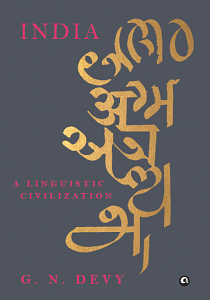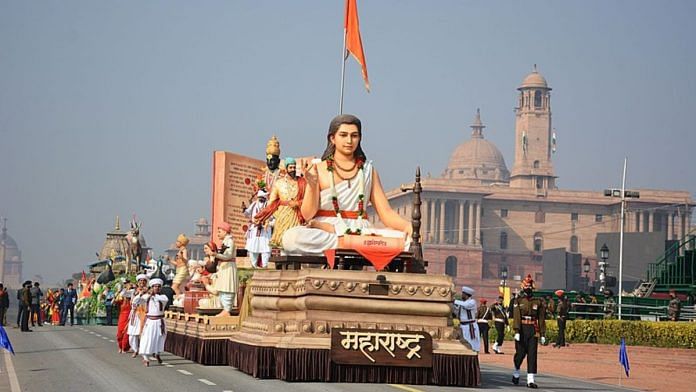The amnesia about how significantly the Prakrits and, to an extent Pali, have contributed to all that India speaks and thinks is not of recent origin. It goes back in the past at least for a millennium. For most part of that long period of anonymity of Pali, the Prakrits have been active, but without recalling that the Prakrits were firmly wedded to the Pali language in ancient times dating nearly to the fifth century.
Therefore, the knowledge of the language that was used for documenting the most central canonical Jain and Buddhist texts remained confined to a handful of initiated monks for centuries. Alas, Buddhism was banished in the first millennium CE from its country of birth, and the knowledge of Pali Buddhist texts remained alive in countries outside India such as Sri Lanka, Nepal, and Thailand.
The many regional varieties of Prakrits continued their existence in transmuted form. Thus, from the tenth century CE onwards one variety of Prakrit developed as Gujarati, another as Bangla and Odia, and a third one as Marathi and Konkani, to mention but a few examples.
During the period of the emergence of India’s modern bhashas such as Sindhi, Kashmiri, Punjabi, Hindi, Marathi, Gujarati, Odia, Bangla, Nepali, and Assamiya, people had moved away from Sanskrit. While a small number of scholars continued to produce texts in Sanskrit through that period, most of the thinkers, saints and poets chose to turn to the Prakrit-based languages that had been emerging a thousand years before our time.
A Marathi saint-poet of the fourteenth century put this sentiment in perspective when he asked, ‘If Sanskrit is Dev-bhasha, made by gods, is Marathi made by thieves?’ His predecessor Dnyanadeva said that Marathi is sweeter than nectar. In other words, by the beginning of the second millennium, Indians had moved beyond both Sanskrit and Pali. Fortunately for the Pali language, it received a fresh impetus in Sri Lanka from Ratnamati, alias Ratnashrijnana (900–980 CE).
Also read: How the widow’s veil evolved in the West—Queen Victoria to Jackie Kennedy
Towards the end of the eighteenth century, Sir William Jones’s hypothesis drew all scholarly attention to the history of Sanskrit. Following William Jones’s hypothesis, other scholars like Francis Whyte Ellis in 1816 and Robert Caldwell in 1856 pointed out that just as there was an Indo-Aryan language family, there was also a Dravidian language family.
No scholar paid comparable attention to Pali and the Prakrits, and they were described in tentative and uncertain terms as offshoots of Sanskrit. Dharmanand Kosambi’s (1876– 1947) work in drawing attention to Pali was significant. A year-and-a-half after his death, the Constituent Assembly resolved to institute a separate schedule for languages in the Constitution. Sanskrit was included in it, though no Indians had used Sanskrit as a language of everyday life for more than a thousand years.
The language in which Buddhist scriptures are written received no attention, despite the twentieth century revival of Buddhism in India.
To get an idea of how, many languages other than Sanskrit have contributed to India’s linguistic composition, it may help to look at the current map of India. The languages of the Northeast are known to have descended neither from Sanskrit nor from Tamil. The languages in the South as well as in Goa, Maharashtra, Orissa, West Bengal, and Bihar are nurtured by either Prakrits or the ancient Tamil.
In comparison, the areas that have languages coming straight from Sanskrit are fewer. The Prakrits served as the languages of the non-elites in ancient India since Sanskrit was primarily the language of the elite rulers and priestly classes. Commenting on the Sanskrit-Prakrit relation, Andrew Ollett states:
Prakrit is the name of a literary language that was used from roughly the beginning of the Common Era. The word means ‘common’ (literally, ‘of or relating to the basic character’) and contrasts with ‘Sanskrit’, meaning ‘refined’. It thus designates a language that according to the Natyashastram (Treatise on Theatre), is exactly the same as Sanskrit, but reversed, in so far as it lacks the quality of Sanskrit.
Sanskrit and Prakrit are often mentioned together as a contrasting pair, and the two of them would be recognised as India’s pre-eminent literary languages up until the emergence of vernacular literatures (Devy et al., 2023). In sociological terms, the labour classes, the peasants, the subjugated castes, the tribal people, and women in India have Prakrits as their heritage languages.
So far, no one in India has asked the question as to why Pali—the language of Buddhist and Jain cannons—has not been included in the Eighth Schedule of India’s Constitution as was Sanskrit. Certainly, a considerable amount of additional research and investigation is necessary for us to know the exact role played by Pali in the making of India.
Eminent contemporary scholar of Pali, Mahesh Deokar outlines the following questions related to Pali that are still awaiting in-depth scrutiny: What was the process of canonisation and what were the criteria of qualifying the canonical texts? Why does there seem to have been no production of Pali texts between the third century BCE and the third century CE? (He mentions the Milind-panho as an exception to this observation.) What was the state of Pali during this period? How, if at all, did Pali interact with other Buddhist textual traditions, such as the Sanskrit and Gandhari, in this long period?
What can we learn about the Pali canon by comparing it to related texts in Sanskrit, Gandhari and Chinese?
 This excerpt from GN Devy’s ‘India: A Linguistic Civilization’ has been published with the permission of Aleph Book Company.
This excerpt from GN Devy’s ‘India: A Linguistic Civilization’ has been published with the permission of Aleph Book Company.





Why this title even if a poet mentioned so? Using this directly in a title, out-of-context, is a shallow minded, frivolous attempt to sensationalise and just attract clicks. It is opportunistic and seems to show ill intention and low respect towards the language of some of the most large-hearted, accommodating and modern thinking people, the Marathi speaking people of Maharashtra. The tile does not seems to represent the gist of the whole article as well. Please change this title or take the article off.
What is the name of the Saint , who said this ?
Did he told this to BBC correspondent ?
Or the writer read some propagandist books ?
I am Marathi & haven’t came across any such rubbish statement by anyone , least by saint.
Serious thoughts on Indian languages
Thank you
When you praise a person or a thing, it does not mean others are totally bad. When a child praises his mother it does not mean that father is totally bad. When a student says language teacher teaches well, it does not mean that other subject teachers do not teach well. These type of utter non sense message should not be spread by newspapers.
In early 90’s it was like declaring Sanskrit as National Language about to happen but BJP and Shiv-sena favoured Hindi. I ask Marathi people again to come forward to embrace Sanskrit as National Language. Stop learning Hindi, it is a fake language like English and Urdu. Sanskrit is not just an ancient language but also it the language of the vast Hindu scriptures and Hindu Universe from central Asia to Indonesia. Unification of Aryavart depends on Sanskrit language. In future for our space programs a good command over Sanskrit language is needed. Our prayers at schools must be in Sanskrit language because it is language of God.
Stop doing school prayers as a formality but pray to God in native Gods language. All Hindi and prayer must be banned in India because they are fake language.
School prayers are misused or abused by our politicians to manifest their world.
So embrace Sanskrit, pray in Sanskrit and promote all scriptures.
Answer to the idiotic question posed by the 14th century “saint-poet”: Seems so.
Shoes the cheap thinking of the writer. All languages are equal and some language have been invented earlier some came later. It will s a shame that media is showcasing such differences.
Sanskrit language is very nice language and marathi also. Jai ShreeRadheKrishna🚩 Jai Shree Dnyaneshwar Maharaj Ji 🚩